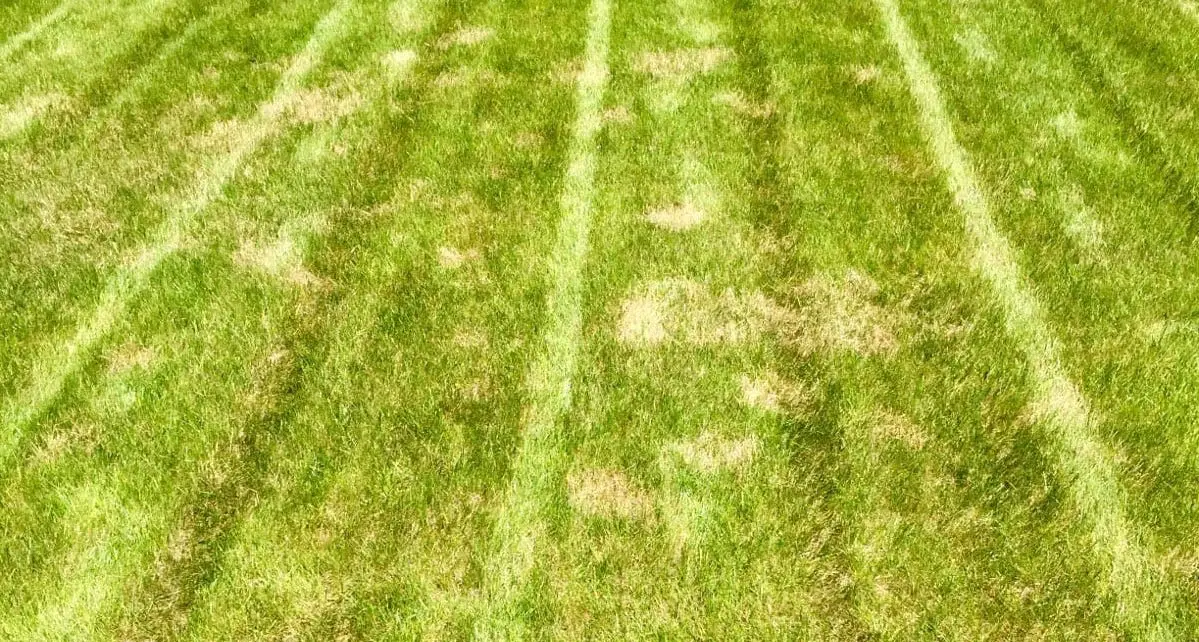LAWN PHIX PRO TIPS
I’ve had two turf-type tall fescue (TTTF) lawns over the past five years and am no stranger to brown patch disease. It is also the most common disease that I encounter on customers’ lawns. Here’s some quick, high-level information and tips to beat brown patch fungus.
- Brown patch is a widespread and damaging lawn disease that is better off being prevented than cured.
- At first signs, you’ll see large gray rings eventually turning into brown circles.
- Brown Patch thrives when temperatures are 80+ degrees and humidity is 60+.
- Affected areas will spread, and damage will worsen if left untreated.
- Establish cultural practices (proper mowing and watering) to prevent and limit the spread of brown patch disease.
- Apply low-nitrogen and slow-release fertilizers containing organic matter like humic acid, biosolids, sulfate of potash, and poultry manure.
- Incorporating more micronutrients and nutrition in the spring and summer helps prevent most diseases (yucca, calcium, amino acids).
- Rotate fungicides – the most commonly used are Propiconazole and Azoxystrobin.
- For severe outbreaks, I use broad-spectrum products with two fungicides, like Pillar G or Armada 50 WDG, at curative rates every 14 days.
Brown patch lawn disease can quickly turn a healthy lawn into brown and dead grass. Unfortunately, the brown patch fungus is widely spread all over the country. When conditions like hot and humid weather are present, the brown patch development can erupt and, if left untreated, may spread to the entire lawn. While the fungus that causes the disease is commonplace, a healthy lawn and good lawn care practices can help you prevent many lawn diseases, including brown patch, from affecting your grass blades. Use this guide to help you prevent or treat brown patch lawn disease.
Table of Contents
What Is Brown Patch Lawn Disease?
Brown patch lawn disease is caused by the fungus known as Rhizoctonia solani. Certain types of grasses, including tall fescue, bentgrasses, and perennial ryegrass are especially vulnerable to this fungal pathogen, but any turfgrass species may be affected by it. For instance, brown patch lawn disease is a particular problem from Kentucky bluegrass during the hot weather of mid to late summer. Some grass species are more susceptible to brown patch development during early spring or late spring when there are extended periods of rain.
What Does Brown Patch Lawn Disease Look Like?
The chief characteristic of brown patch lawn disease is, in fact, the presence of circular brown patches on your lawn – oftentimes with a spot of green grass in the middle. This is different from summer patch which is a crescent shape and affects the roots of the grass.
Brown patch disease begins as spotting on leaf blades. The infected grass blades will also have a dark ring (black) around the brown lesions – slightly different than leaf spot disease. As the spotting continues, they bleed together to completely turn the grass blade brown. In time, the dead areas of grass appear to be encircled by a dark smoke ring or what appears to be a dark brown border. The ring is most noticeable in the early morning hours. Each brown patch may measure a mere few inches to several feet.
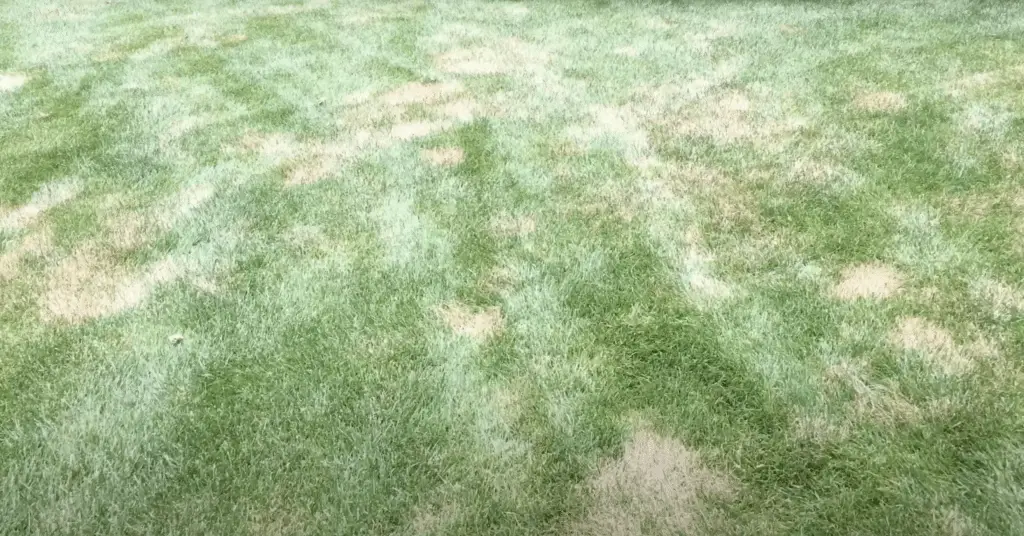
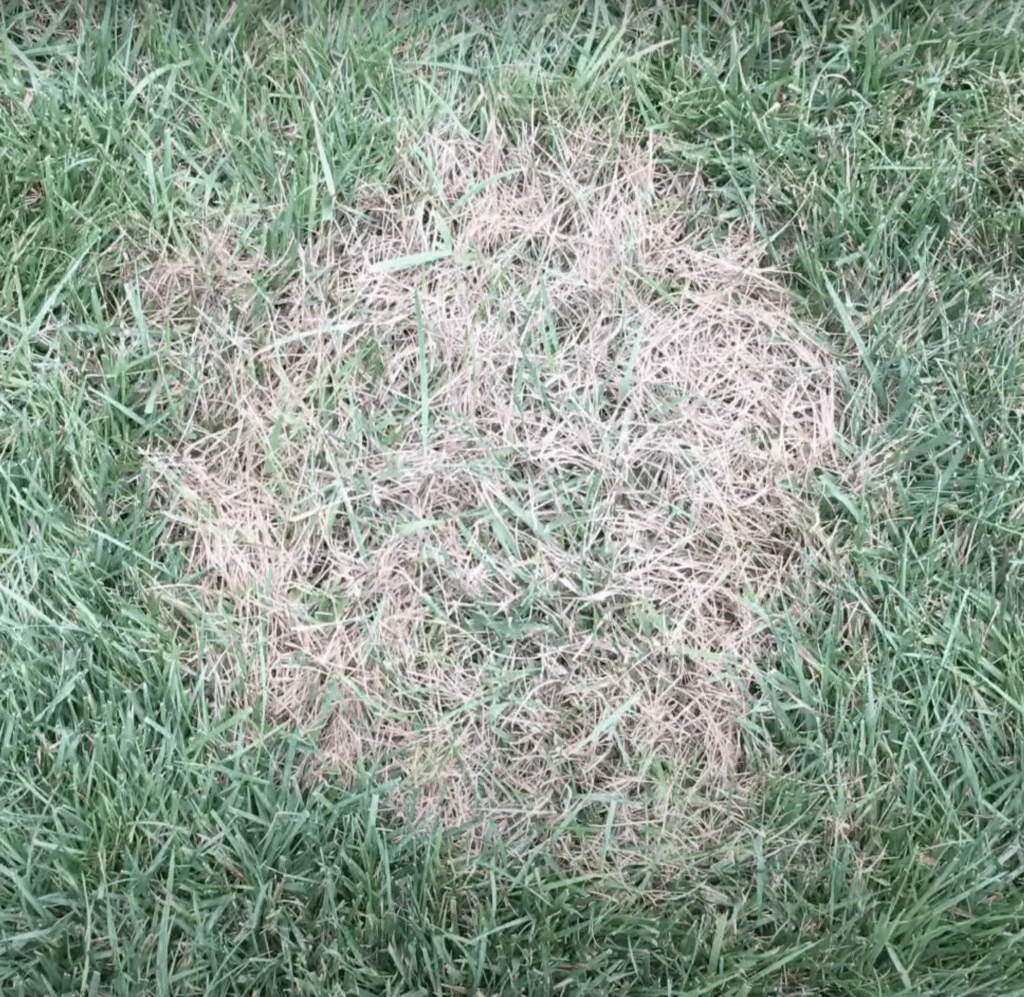
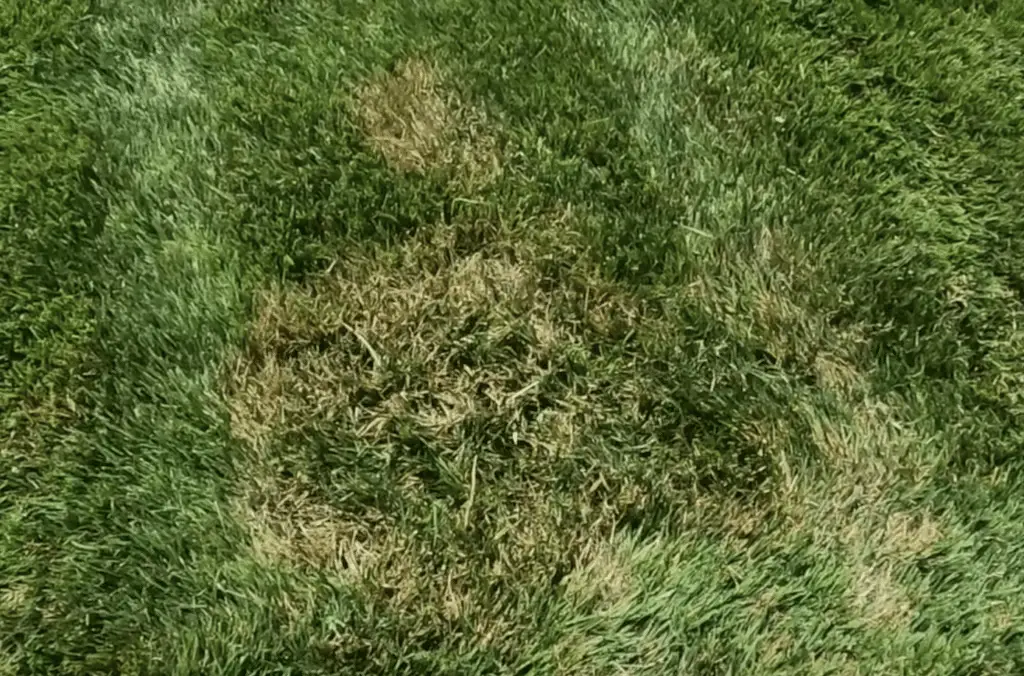
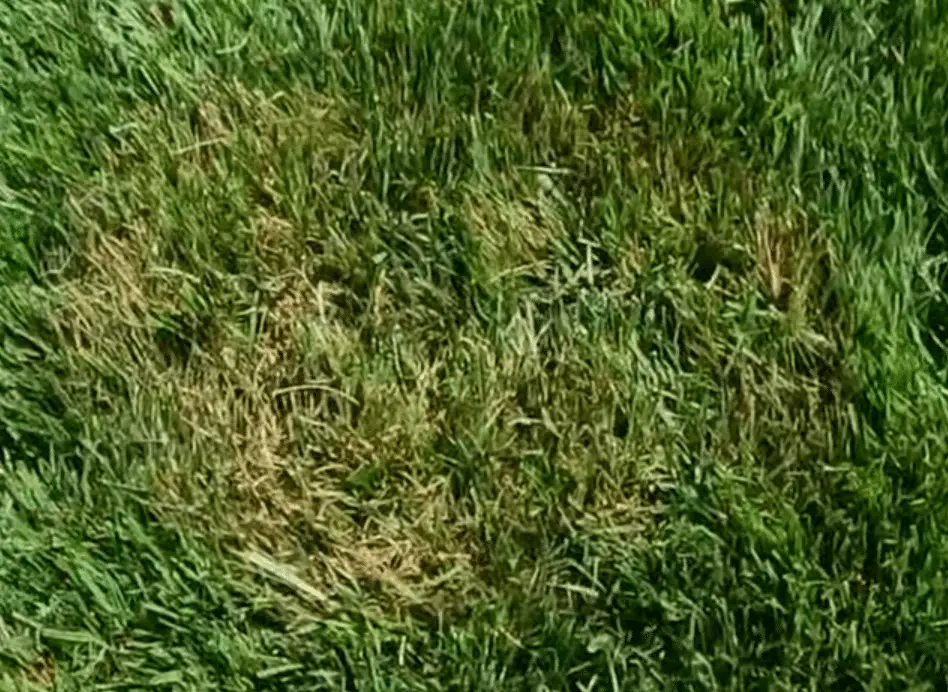

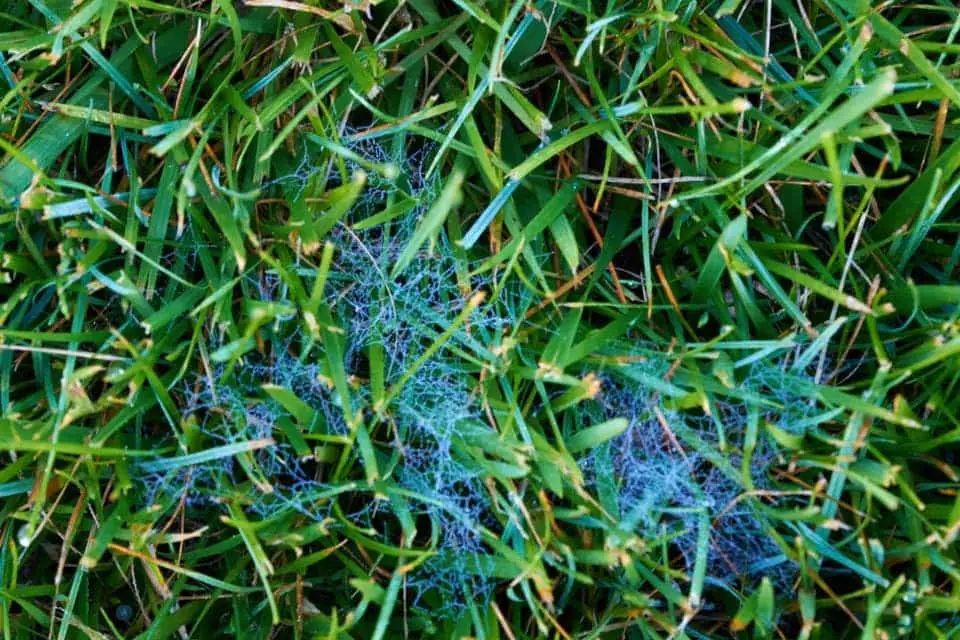
What Causes Brown Patch Lawn Disease?
Hot weather and high humidity are often the culprits for triggering brown patch lawn disease to erupt in cool-season grasses – particularly tall fescue. However, other factors are frequently present too. For instance, the disease is more likely to develop in lawns with excessive nitrogen. Soil compaction, poor soil drainage, and reduced air circulation can also cause brown patch lawn disease to develop. The fungus that causes the disease thrives in these conditions, but unlike many lawn diseases, this one can erupt and spread with extreme rapidity.
Brown Patch Fungus Treatment
If your lawn is plagued by brown patch lawn disease, you’ll want to avoid using nitrogen fertilizer for the time being. Brown patch control is easy to manage with the use of a good lawn fungicide such as Azoxystrobin or Propiconazole. Prevent brown patch resistance by rotating these fungicides every 1-2 applications.
Pro tip: Apply a liquid iron to your tank with fungicides. Chelated iron product is a surefire way to make your grass pop if your lawn is turning yellow from an iron deficiency.
You should also aerate the soil in the early fall, overseed with new grass species, and attempt to improve the air circulation. Don’t water in the evening; instead, water in the early morning hours. Treating brown patch, especially in the early stages, can sometimes be accomplished successfully by taking the same measures you would in order to prevent the disease.
Preventing Brown Patch Lawn Disease
A healthy lawn is your best defense against brown patch development. To that end, perform the following prevention steps:
- Use a moderate amount of nitrogen fertilizer (never excessive)
- Water your lawn during early morning hours – never in the evenings
- Ensure good air movement
- Correct soil compaction
- Stick to an optimum mowing height (not too long, not too short; choose an optimum height associated with your lawn species)
- Bag your clippings when fungus is present
- Improve soil drainage
- Incorporate other grass species into your tall fescue lawn
- Rotate fungicides and apply preventivie applications
Brown Patch FAQs
What are the best fungicides to treat brown patch lawn disease?
If you see brown spots in your lawn and confirm grass blades are affected by brown patch, we suggest rotating Azoxystrobin and Propiconazole lawn fungicides to treat brown patch lawn disease.
What causes brown patch lawn disease?
Brown patch lawn disease is a fungal disease caused by the Rhizoctonia solani fungus, and is very common in tall fescue grasses. High humidity and warm temperatures promote disease development.
What’s the best way for treating brown patch lawn disease?
Use the prevention tips outlined above like improving soil compaction, preventing excessive nitrogen in your lawn, and watering in the early morning hours (especially during humid weather conditions). You can also apply fungicides to prevent and treat brown patch. Remember that maintaining a healthy lawn can help you prevent brown patch.

